
|
|
Font Size:
|
||||
|
|
|
|
||||
STATISTICAL BRIEF #124:
The Persistence in the Level of Health Expenditures over Time: Estimates for the U.S. Population, 2002-2003
Highlights
- In 2002, 1 percent of the population accounted for 22 percent of overall health care expenditures and one out of four of these individuals retained this ranking in 2003. The lower half of the population accounted for only 3 percent of overall health care expenditures in 2002 and nearly three out of four of these individuals retained this ranking in 2003.
- Those who remained in the top decile of spenders in 2002 and 2003 differed significantly by age, race/ethnicity, sex, health status, and health insurance coverage from those who remained in the lower half of the distribution.
- Those reporting excellent or very good health status were disproportionately represented in the lower half of spenders during 2002 and 2003. Those reporting fair or poor health status were disproportionately represented in the top decile of spenders for the same period.
- While 13.7 percent of the overall population under age 65 was uninsured for all of 2003, the full-year uninsured comprised 20.7 percent of all individuals remaining in the bottom half of spenders. Only 4.6 percent of those under 65 who remained in the top decile of spenders were uninsured for all of 2003.
- Relative to the overall population, those who remained in the top decile of spenders were also more likely to be elderly, female, and non-Hispanic. Those remaining in the bottom half of spenders were more likely to be children and young adults, men, and Hispanic.
Introduction
Estimates of the health care expenses of the U.S. civilian noninstitutionalized (community) population are critical to policymakers and others concerned with access to medical care and the cost and sources of payment for that care. In 2003, health care expenses among the U.S. community population totaled $895.5 billion. Medical care expenses, however, are highly concentrated among a relatively small proportion of individuals in the community population. As previously reported in 1996, the top 1 percent of the U.S. population accounted for 28 percent of the total health care expenditures and the top 5 percent for over half. More recent data have revealed that over time there has been some decrease in the extent of this concentration at the upper tail of the expenditure distribution.
Using information from the Household Component of the Medical Expenditure Panel Survey (MEPS-HC) for 2002 and 2003, this report provides detailed estimates of the persistence in the level of health care expenditures over time. Studies that examine the persistence of high levels of expenditures over time are essential to help discern the factors most likely to drive health care spending and the characteristics of the individuals who incur them. The MEPS-HC data are particularly well suited for measuring these trends in the concentration of expenditures over time. All differences between estimates discussed in the text are statistically significant at the 0.05 level unless otherwise noted.
Findings
In 2002, 1 percent of the population accounted for 22 percent of total health expenditures, and the lower 50 percent of the population ranked by their expenditures accounted for only 3 percent of the total. Of those individuals ranked at the top 1 percent of the health care expenditure distribution, 25.3 percent maintained this ranking with respect to their 2003 health care expenditures (figure 1). This reflected a near doubling of the proportion of the population in the highest percentile of the health care expenditure distribution that retained this ranking in a subsequent year, relative to the population's profile over the 1996-1997 period (Monheit, 2003).
In 2002, the top 5 percent of the population accounted for 49 percent of health care expenditures. Among those individuals ranked in the top 5 percent of the health care expenditure distribution, 34.0 percent retained this ranking with respect to their 2003 health care expenditures. Similarly, the top 10 percent of the population accounted for 64 percent of overall health care expenditures in 2002, and 41.8 percent of this subgroup retained this top decile ranking with respect to their 2003 health care expenditures. The data also indicate that a small percentage of the individuals in the top percentiles in 2002 had expenditures for only one year because they died, were institutionalized, or were otherwise ineligible for the survey in the subsequent year.
Furthermore, individuals ranked in the top half of the health care expenditure distribution in 2002 accounted for 97 percent of all health care expenditures. Among this population subgroup, 73.8 percent maintained this ranking in 2003. Alternatively, individuals ranked in the bottom half of the health care expenditure distribution accounted for only 3 percent of medical expenditures. Similar to the experience of the top half of the population based on their medical expenditure rankings, 72.8 percent of those in the lower half of the expenditure distribution retained this classification in 2003.
Individuals who were between the ages of 45 and 64 and the elderly (65 and older) were disproportionately represented among the population that remained in the top decile of spenders for both years. While the elderly represented 12.6 percent of the overall population, they represented over 50 percent of those individuals who remained in the top decile of spenders (figure 2). For those individuals who remained in the lower half of the distribution based on health care expenditures over the two-year span, the elderly represented only 2.5 percent of the population. Alternatively, children (0-17) and young adults (18-29) were disproportionately represented among the population that remained in the bottom half of spenders (37.6 percent and 22.0 percent, respectively). In contrast, children and young adults represented only 2.3 percent and 4.6 percent, respectively, of those individuals who remained in the top decile of spenders.
Hispanics and black non-Hispanics single race were disproportionately represented among the population that remained in the lower half of the distribution based on health care spending. While Hispanics represented 14.0 percent of the overall population, they represented over 22 percent of those individuals who remained in the bottom 50 percent of spenders (figure 3). For those individuals who remained in the top decile of spenders, Hispanics represented only 5.9 percent of the population.
Individuals who remained in the top decile of spenders in 2002 and 2003 also differed significantly by sex, compared with those who remained in the lower half of the distribution ranked by medical care expenditures. While females represented 51.0 percent of the overall population, they represented over 62 percent of those individuals who remained in the top decile of spenders (figure 4). For those individuals who remained in the lower half of the distribution based on health care expenditures over the two-year span, females represented only 41.4 percent of the population. Alternatively, males were disproportionately represented among the population that remained in the bottom half of spenders (58.6 percent). In contrast, males represented only 37.6 percent of those individuals who remained in the top decile of spenders.
Health status was a particularly salient factor that distinguished those individuals who remained in the top decile of spenders. Overall, 2.9 percent of the population was reported to be in poor health in 2003, and another 7.8 percent was classified in fair health (figure 5). In contrast, of those individuals who remained in the top decile of spenders, 21.7 percent were in poor health and another 27.4 percent were in fair health. Furthermore, for those individuals remaining in the bottom half of spenders, only 0.5 percent was reported to be in poor health and 3.5 percent in fair health. Individuals in excellent or very good health were disproportionately represented among those who remained in the lower half of spenders (42.1 percent and 32.5 percent, respectively). Alternatively, for those individuals remaining in the top decile of spenders, only 2.6 percent were reported to be in excellent health and 15.3 percent in very good health.
When focused on the population under age 65, health insurance coverage status also served to distinguish individuals who remained in the top decile of spenders from their counterparts in the lower half of the distribution. Individuals who were uninsured for all of calendar year 2003 were disproportionately represented among the population that remained in the lower half of the distribution based on health care spending. While 13.7 percent of the overall population under age 65 was uninsured for all of 2003, the full-year uninsured comprised 20.7 percent of all individuals remaining in the bottom half of spenders (figure 6). Alternatively, only 4.6 percent of those under age 65 who remained in the top decile of spenders were uninsured for all of 2003.
With respect to poverty status classifications, 37.7 percent of the overall population resided in families or single-person households with high incomes in 2003 (figure 7). A lower representation of high income individuals (28.2 percent) was observed among those who remained in the lower half of spenders from 2002 to 2003.
Data Source
The estimates shown in this Statistical Brief are drawn from analyses conducted by the MEPS staff from the following public use files: 2002 and 2003 Full-Year Consolidated Data Files, HC-070 and HC-079, and the MEPS Panel 7 Longitudinal Weight File, HC-080.
Definitions
Expenditures
MEPS-HC defines total expense as the sum of payments from all sources to hospitals, physicians, other health care providers (including dental care), and pharmacies for services reported by respondents in the MEPS-HC. Sources include direct payments from individuals and families, private insurance, Medicare, Medicaid, and miscellaneous other sources.
Uninsured
Individuals who were not covered by any comprehensive private or public health plan during the year were defined as uninsured. People who were covered only by noncomprehensive State-specific programs (e.g., Maryland Kidney Disease Program) or private single-service plans (e.g., coverage for dental or vision care only, coverage for accidents or specific diseases) were also considered to be uninsured. Insurance status was defined for calendar year 2003.
Age
Age was defined as age at the end of the year 2003.
Race/ethnicity
Classification by race and ethnicity was based on information reported for each family member. Respondents were asked if each family member's race was best described as American Indian, Alaska Native, Asian or Pacific Islander, black, white, or other. They also were asked if each family member's main national origin or ancestry was Puerto Rican; Cuban; Mexican, Mexicano, Mexican American, or Chicano; other Latin American; or other Spanish. All persons whose main national origin or ancestry was reported in one of these Hispanic groups, regardless of racial background, were classified as Hispanic. Since the Hispanic grouping can include black Hispanic, white Hispanic, Asian and Pacific Islanders Hispanic, and other Hispanic, the race categories of black, white, Asian and Pacific Islanders, and other do not include Hispanic. MEPS respondents who reported other single or multiple races and were non-Hispanic were included in the other category. For this analysis, the following classification by race and ethnicity was used: Hispanic (of any race), non-Hispanic blacks single race, non-Hispanic whites single race, and others, and non-Hispanic Asian and Pacific Islanders single race.
Poverty status
Sample persons were classified according to the total yearly income of their family. Within a household, all people related by blood, marriage, or adoption were considered to be a family. Poverty status categories are defined by the ratio of family income to the Federal income thresholds, which control for family size and age of the head of family. Poverty status was based on annual income in 2003.
Poverty status categories are defined as follows:
- Poor: Persons in families with income less than or equal to the poverty line; includes those who had negative income.
- Near poor: Persons in families with income over the poverty line through 125 percent of the poverty line.
- Low income: Persons in families with income over 125 percent through 200 percent of the poverty line.
- Middle income: Persons in families with income over 200 percent through 400 percent of the poverty line.
- High income: Persons in families with income over 400 percent of the poverty line.
In every round, the respondent is asked to rate the health of every member of the family. The exact wording of the question is: "In general, compared to other people of (PERSON)'s age, would you say that (PERSON)'s health is excellent, very good, good, fair, or poor?" The health status classification in Round 3 was used for this report, and the small percentage of missing (~1 percent) responses were classified in the good health status category.
About MEPS-HC
MEPS-HC is a nationally representative longitudinal survey that collects detailed information on health care utilization and expenditures, health insurance, and health status, as well as a wide variety of social, demographic, and economic characteristics for the civilian noninstitutionalized population. It is cosponsored by the Agency for Healthcare Research and Quality and the National Center for Health Statistics.
For more information about MEPS, call the MEPS information coordinator at AHRQ (301-427-1656) or visit the MEPS Web site at http://www.meps.ahrq.gov/.
References
Cohen, J. Design and Methods of the Medical Expenditure Panel Survey Household Component. MEPS Methodology Report No. 1. AHCPR Pub. No. 97-0026. Rockville, Md.: Agency for Health Care Policy and Research, 1997.
Cohen, S. Sample Design of the 1996 Medical Expenditure Panel Survey Household Component. MEPS Methodology Report No. 2. AHCPR Pub. No. 97-0027. Rockville, Md.: Agency for Health Care Policy and Research, 1997.
Cohen, S. Design Strategies and Innovations in the Medical Expenditure Panel Survey. Medical Care, July 2003: 41(7) Supplement: III-5-III-12.
Monheit, A. Persistence in Health Care Expenditures in the Short Run: Prevalence and Consequences. Medical Care, July 2003: 41(7) Supplement: III-53-III-64.
Yu, W. and Ezzati-Rice, T. Concentration of Health Care Expenditures in the U.S. Civilian Non-institutionalized Population. Statistical Brief #81. May 2005. Agency for Healthcare Research and Quality, Rockville, Md.
Suggested Citation
Cohen, S. B. and Yu, W. The Persistence in the Level of Health Expenditures over Time: Estimates for the U.S. Population, 2002-2003. Statistical Brief #124. May 2006. Agency for Healthcare Research and Quality, Rockville, Md. http://www.meps.ahrq.gov/mepsweb/data_files/publications/st124/stat124.shtml
AHRQ welcomes questions and comments from readers of this publication who are interested in obtaining more information about access, cost, use, financing, and quality of health care in the United States. We also invite you to tell us how you are using this Statistical Brief and other MEPS data and tools and to share suggestions on how MEPS products might be enhanced to further meet your needs. Please e-mail us at mepspd@ahrq.gov or send a letter to the address below:
Steven B. Cohen, PhD, Director
Center for Financing, Access, and Cost Trends
Agency for Healthcare Research and Quality
540 Gaither Road
Rockville, MD 20850
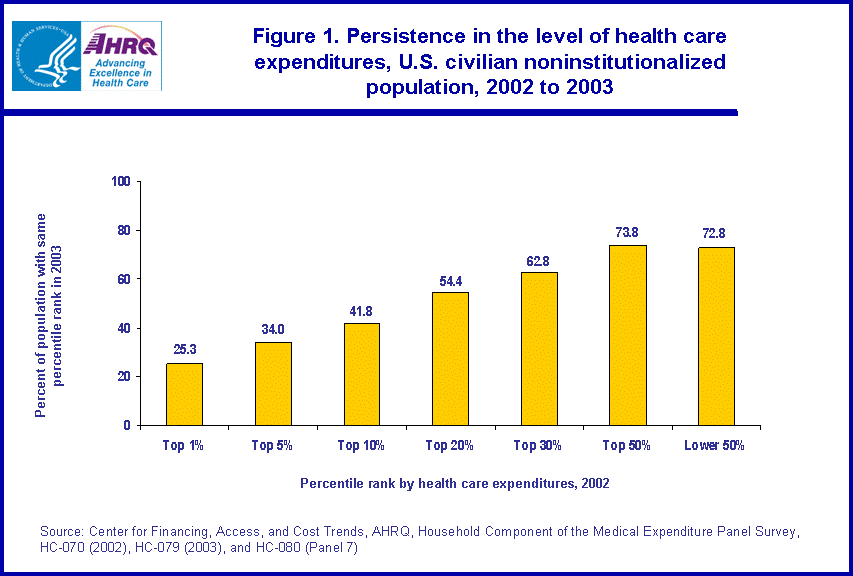 |
||||||||||||||||||||||||||||||||||||||||
|
||||||||||||||||||||||||||||||||||||||||
|
|
||||||||||||||||||||||||||||||||||||||||
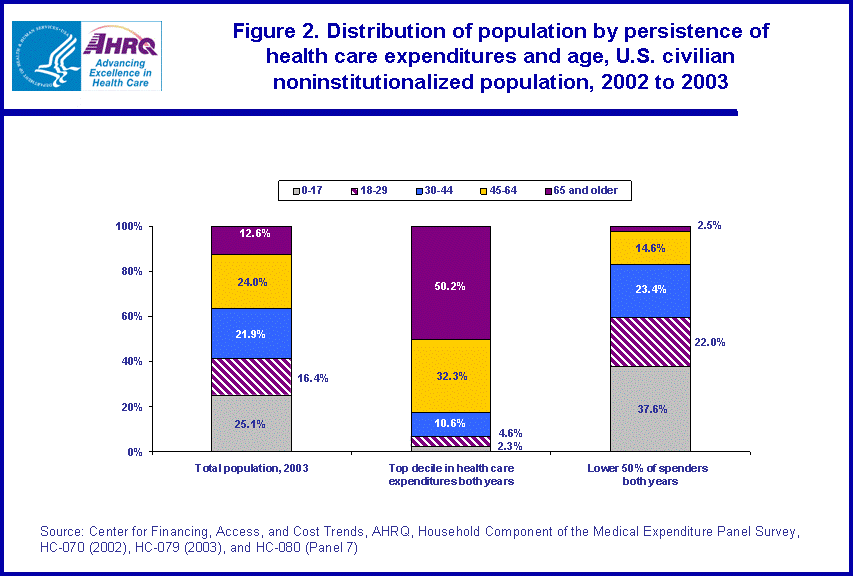 |
||||||||||||||||||||||||||||||||||||||||
|
||||||||||||||||||||||||||||||||||||||||
|
|
||||||||||||||||||||||||||||||||||||||||
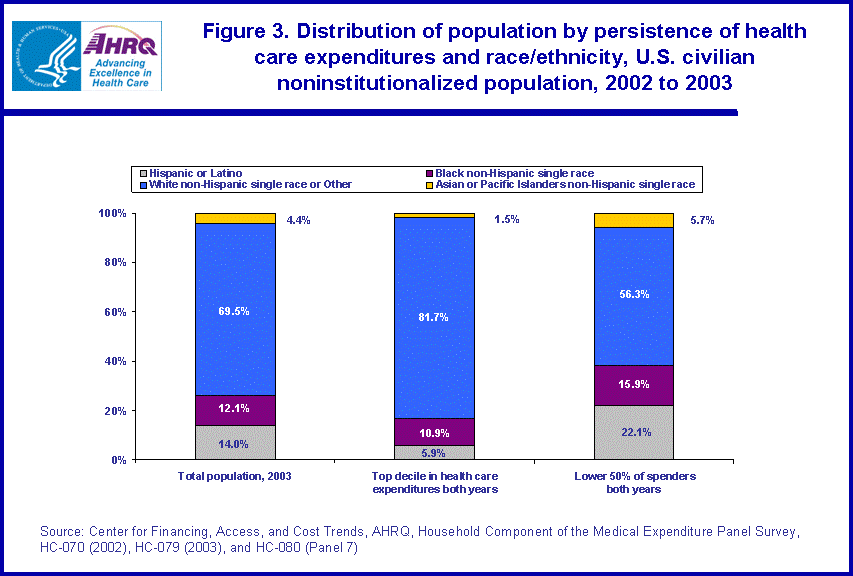 |
||||||||||||||||||||||||||||||||||||||||
|
||||||||||||||||||||||||||||||||||||||||
|
|
||||||||||||||||||||||||||||||||||||||||
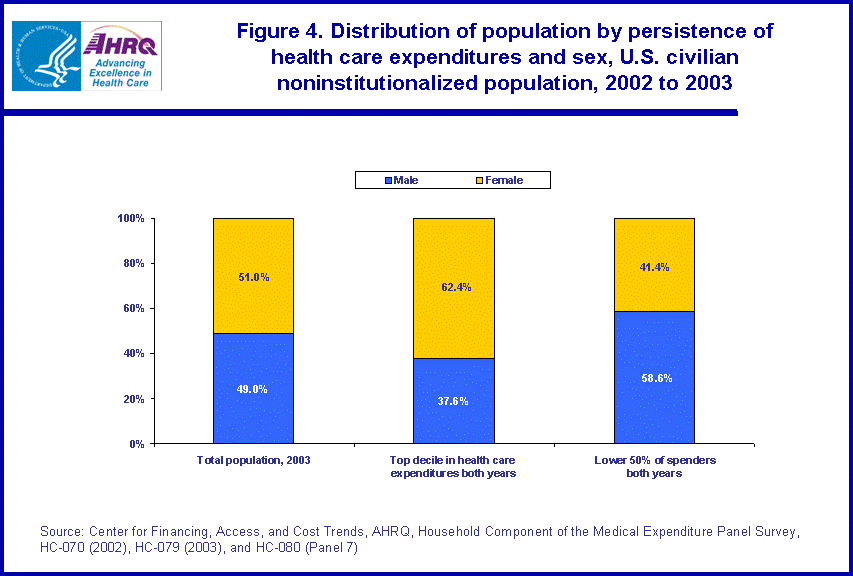 |
||||||||||||||||||||||||||||||||||||||||
|
||||||||||||||||||||||||||||||||||||||||
|
|
||||||||||||||||||||||||||||||||||||||||
 |
||||||||||||||||||||||||||||||||||||||||
|
||||||||||||||||||||||||||||||||||||||||
|
|
||||||||||||||||||||||||||||||||||||||||
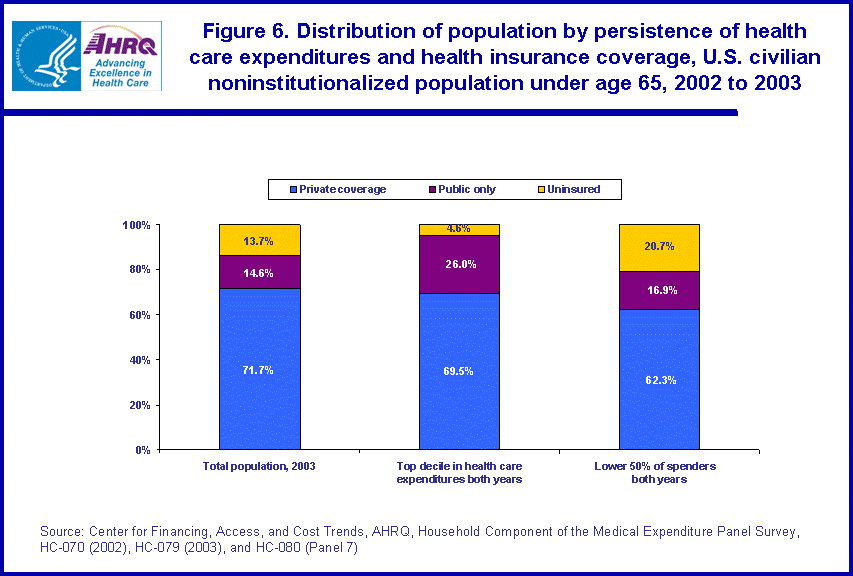 |
||||||||||||||||||||||||||||||||||||||||
|
||||||||||||||||||||||||||||||||||||||||
|
|
||||||||||||||||||||||||||||||||||||||||
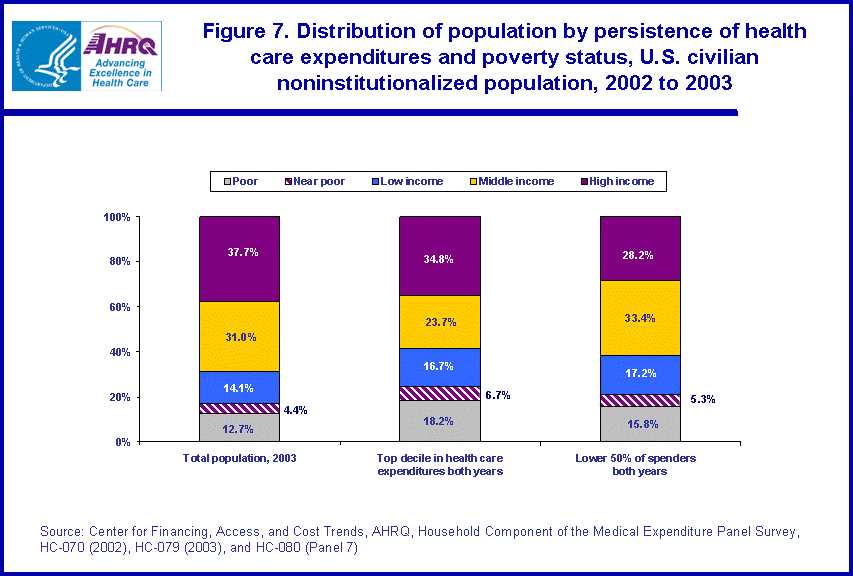 |
||||||||||||||||||||||||||||||||||||||||
|
||||||||||||||||||||||||||||||||||||||||
|
|
||||||||||||||||||||||||||||||||||||||||


